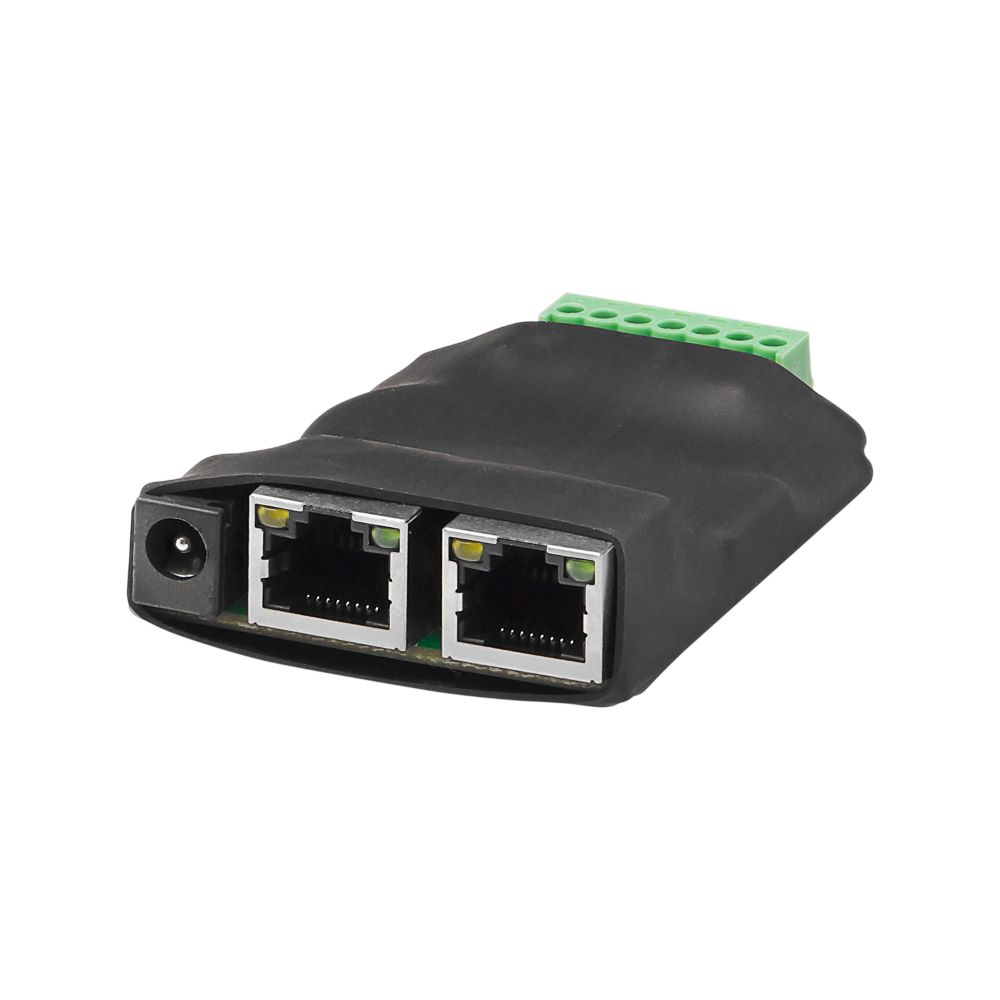Description
| Name | Status | Price, $ |
|---|---|---|
| NetPing IO R401 | ACTIVE | 60 |
General usage conditions - for industrial and commercial usage in conditions of high humidity (0-95%, non-condensing). The device is not intended for domestic use. |
NetPing IO R401 is a remote monitoring device with the ability to connect executive devices. A device has got no case and is packed into the heat-shrinkable tubing. NetPing IO R401 is the cheapest device in our model line. Connected to it, door opening sensors, motion detectors, light and noise sirens will warn of unauthorized access. Leakage sensors will allow to receive timely notifications about emergencies, and 220V detection sensors will allow to receive timely notifications about disappearing and appearing of power in a monitored electrical network.
NetPing IO R401 device is shipped without a power unit. For its operation, it is possible to use any external power unit with a voltage 12 V and a current more than 0,4А or purchase appropriate power unit from us: power unit 12V 0,5А.
Modifications
| Name | Output lines | Input lines | IO lines | Support for 1-Wire sensors | Ethernet port |
| NetPing Monitor M1 | 2 | 2 | — | ✔ | 1 х 10/100-BASE-TX |
| NetPing IO R401 | — | 2 | 2 | — | 2 х 10/100-BASE-TX |
Applicable solutions:
- Control and restriction of access to equipment racks.
- Load control via power relay and NetPing AC/DIN socket.
- Notifying responsible persons about an emergency.

Device Capabilities
Be notified
|
Easy to Integrate with Monitoring Systems
|
Set it up With Web Interface
|
Control Equipment
|
Built to be Reliable
|
Friendly & Secure
|
Support & Warranty
|
Features Included
The device works 24 hours, 7 days a week, without freezingThe device was designed for continuous operation in an unattended room in a 24/7 operating mode. A built-in power supervisor protects the device from freezing when there are voltage surges. We do not implement third-party resource-intensive operating systems into the device, we write the whole code on our own, and it is optimized as much as possible for this functionality. |
A built-in webserverThe configuration and management of the device are carried out via a browser. You do not need any special software. It works in any OS (Windows, Linux, Mac). |
Connection to the Ethernet network, a static IP addressThe device is connected to an ordinary office Ethernet network, to any free Ethernet port on the switch. If you publish the IP address of the device on the Internet, you can control the sockets of the device from anywhere in the world. |
Authorization and access restrictionAccess to the web interface of the device is protected by a user-configurable login and password. In order to get to the web interface of the device, you need to log in. In addition, you can restrict access to the device, leaving the ability to access only from a specific IP subnet. |
SNMP supportSNMP protocol is widely used in systems for collecting information about network equipment. The device supports commands for managing and receiving information from sensors via the SNMP protocol. The device easily integrates with such network monitoring systems as Zabbix, PRTG Network Monitor, OpenNMS, Nagios, Cacti, The Dude, Monit, and similar ones, which receive information about the status of sensors connected to the device via the SNMP protocol. |
Syslog supportThis protocol, together with the special software on the server, can be used to collect text logs (logs) of the operation of various devices in the network including NetPing devices. This can be very useful for collecting and analyzing statistics. |
URL-encoded commands supportThe device supports sockets control and receiving information from sensors using special HTTP commands. These commands allow you to control the device from any web page developed by the user including those taken from any mobile application. |
Firmware updatingThe device supports firmware update via the device web interface. We periodically release firmware updates. They are free. |
Non-volatile event logAll events (switching devices on and off, information from sensors) are stored in the non-volatile memory. The information will be stored even in case of a power failure. |
Time synchronization with NTP serversThe device does not have a built-in non-volatile clock, that is why it uses constant synchronization with time sources on the Internet (NTP servers). The synchronization with accurate time sources is essential for the “Schedule” function to work and for the correct timestamps in the device event log. |








 FLWS-60BSL
FLWS-60BSL  NetPing AC/DIN
NetPing AC/DIN  NetPing Supply Voltage Sensor 995S2
NetPing Supply Voltage Sensor 995S2  PIR DETECTOR (mod.M105-1E)
PIR DETECTOR (mod.M105-1E)  WA875 Adapter for leakage sensor
WA875 Adapter for leakage sensor